If major RPG franchises like Final Fantasy introduced me to RPGs, it’s the B-tier titles that made me love the genre. Throughout the SNES, PSX, and PS2 eras of gaming, those lower budget, heartfelt RPGs were my bread and butter. Games like Illusion of Gaia (and later Terranigma), Lunar: The Silver Star Story, and Wild Arms meant so much to me, and I’m always in search of titles that capture that same creative energy. The Legend of Nayuta: Boundless Trails may not come from that same time period, but it is absolutely cut from that same cloth.
Granted, it’s no surprise that I would like this one (sorry, spoilers). The Legend of Nayuta was originally released by Nihon Falcom for the PSP in 2012, AKA the creators of the Ys series. If you read my bio at the bottom of this article, you could guess my feelings on the developer. And really, The Legend of Nayuta is potentially the most Falcom-y Falcom game ever made. It sports the Trails/Kiseki moniker in the title, seems to use the Ys Seven engine, yet plays like a mix of Zwei: The Ilvard Insurrection and Ys: The Oath in Felghana. Few games are so tailored to my tastes and sensibilities as this, and I imagine other Falcom fans don’t need my take to know they should pick this one up.
Don’t worry, for the rest of you not as keen on relatively niche RPG franchises, I still have my critic hat on. And while I did thoroughly enjoy The Legend of Nayuta, it maybe doesn’t have the same consistent highs as Falcom’s best work. Mostly due to the hardware it was originally made for.
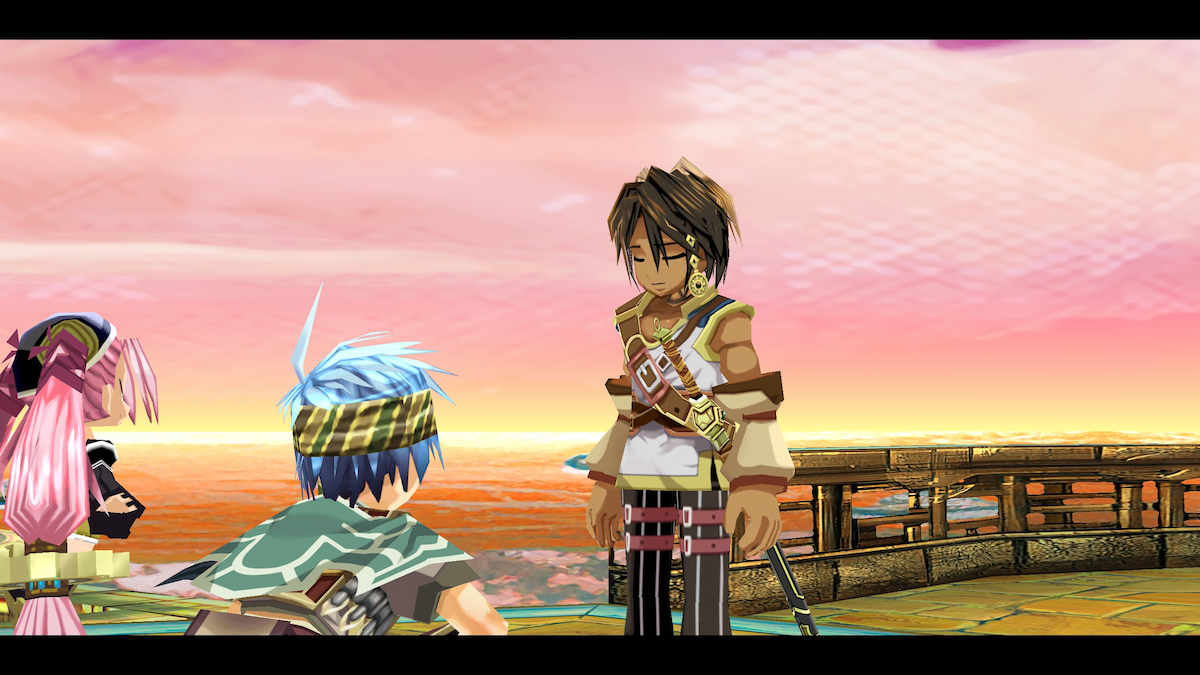
The Legend of Nayuta: Boundless Trails (PC [Reviewed], Nintendo Switch, PlayStation 4)
Developer: Nihon Falcom
Publisher: NIS America, Inc.
Released: September 19, 2023 (NA), September 21, 2023 (EU)
MSRP: $39.99
Trails of no relation
As a quick clarifying note, The Legend of Nayuta: Boundless Trails is a completely standalone title. The Kiseki/Trails series is a mammoth, but you don’t need experience with any of those games to enjoy this one. While there are some references for fans here, the consensus is that Nayuta takes place in its own world. Granted, even if this one was tied to a greater universe, I think you’d understand it just fine.
The titular Nayuta is a boy who lives on an island, and his story is a greatest hits of RPG tropes from roughly 1997 to 2005. He discovers a magical other world called Terra that his parents died while investigating in the past. His best friend is also maybe his rival. There’s a mysterious girl who has lost her memory, who potentially creates a love triangle with Nayuta’s childhood friend. It’s real, real basic, but it’s by-the-book to the point of feeling nostalgic. Some of the later plot points do get contrived, but otherwise I think there’s a lot of charm here.
Part of the appeal is less the story itself and more the smaller details. Falcom games like Ys: The Oath in Felghana have this warm sense of community to them, and The Legend of Nayuta is no exception. Everyone on Nayuta’s island has a name and a distinct personality, and the way everyone cares for each other is exceedingly wholesome. Moments like talking to everyone after saving a particular character and seeing them get tearful over everything turning out okay is just heartwarming, no matter how simple it is. And for me, while the plot isn’t always a bed of flowers, that sense of comfort is what really elevates The Legend of Nayuta as a whole.
Half Action, half RPG, half Platformer
Where The Legend of Nayuta starts getting interesting is within its actual structure. As a game originally created for the PSP, it absolutely feels like a handheld game. It forgoes open areas in favor of bite-sized levels that each feature a handful of challenges to fulfill. Find all the secrets, open the chest(s), and fulfill a specific task like “defeat 30 enemies.” This starts to make this RPG feel a bit like a platformer, which is fitting.
Levels in The Legend of Nayuta generally resemble an Ys dungeon at first glance. You’ll hack and slash your way through monsters, using magic and swordplay between swiftly dodging attacks. However, there’s also a strong focus on straight-up platforming. Jumping from platform to platform, and eventually using unique gimmicks to cross large gaps, takes a strong focus here. In fact, you’ll often see treasure chests that you can only obtain with powers you’ll unlock later, which imbues a bit of Metroidvania here as well.
The game usually controls well, though it does maybe bite off more than it can chew in some regards. More on this later.
Don’t worry though, the RPG side of things is here too. It veers on the simple side, with basic stats and equipment that primarily serve to make you look different and do bigger damage numbers. But fighting baddies and leveling up is as much of this experience as any game, with a few other RPG-y systems thrown in too. Healing items come through cooking, which uses items you find during your adventure to make. Also, you’ll find a wide variety of spells to level up and equip as you see fit. These systems work well, especially since the number crunching is less important than your reflexes.
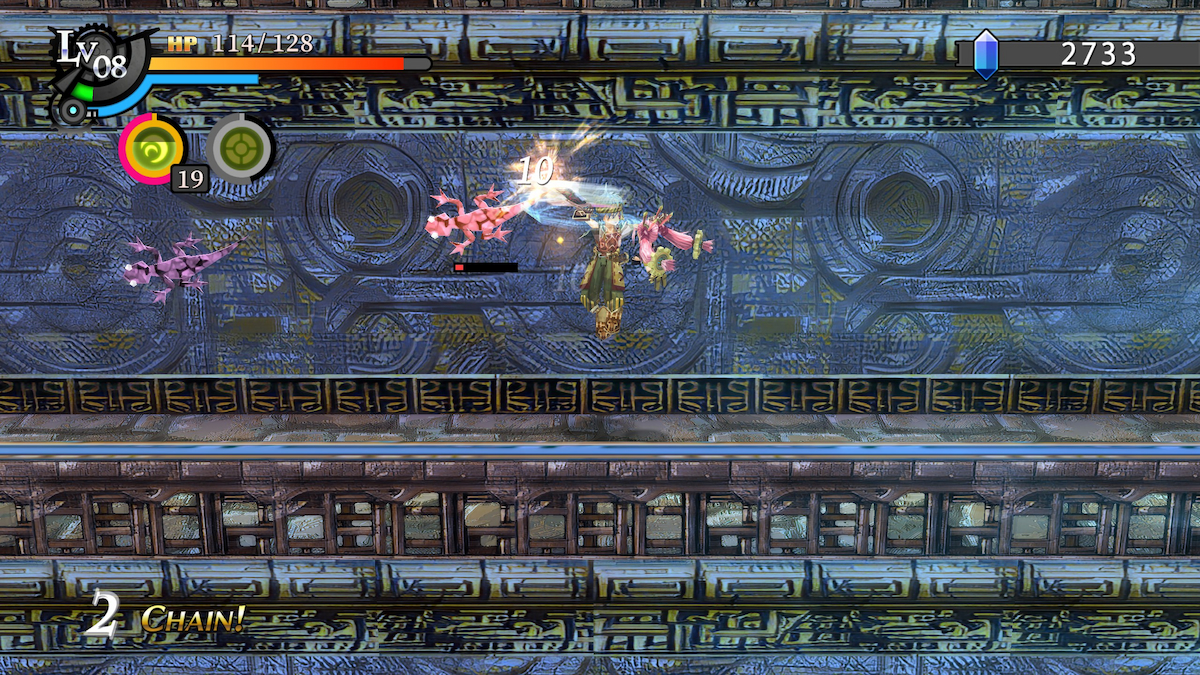
Becoming Adol Christin
The combat system in The Legend of Nayuta evolves in a fascinating way. Compared to Ys games, Nayuta controls much more slowly than Adol Christin at the start. It veers towards Zwei’s more casual focus, with just the right amount of requisite dodging to keep things interesting. However, as Nayuta progresses through the story and completes those optional challenges, his combat capabilities increase. Before you know it, you have unique aerial attacks, a dedicated parry button, charge attacks that use a specific meter, combo chain bonuses, and more.
I eventually hit a point where I was playing Nayuta similarly to how I’d play Adol in something like Ys: Lacrimosa of Dana. Enemies get faster and stronger to match Nayuta, which really gave me that Ys-style rush in the later levels. That said, the game never really veers into especially hard territory. I played on the harder difficulty, and while I did die a few times, it was mostly because I forgot to use my own healing items. This is a very approachable game, but I was never bored.
The boss design can be a bit hit-or-miss, but when it hits, it really hits. There is one encounter in this game that is so explosive that I’m surprised they fit it into what was originally a PSP game. Sure, it comes at a moment where you’d expect something like that, but I still got that “hell yeah!” feeling as I was fighting. Falcom action games run this fine line of feeling both modern and retro at the same time, and The Legend of Nayuta follows in that proud tradition. Fans of Ys Origins, The Oath in Felghana, or The Ark of Napishtim will be thrilled.
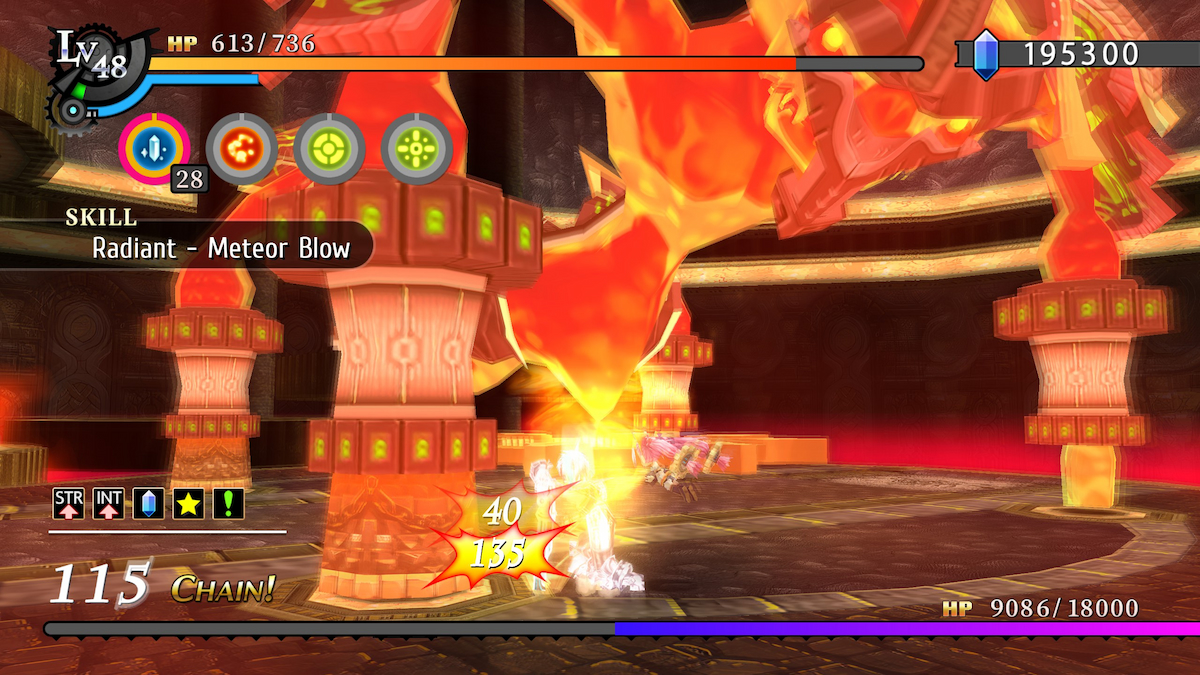
More Falcom jams
Speaking of Falcom staples, I’d be remiss if I didn’t gush about the soundtrack here. The funny thing is, I don’t even think this one hits quite as hard as Ys does on average. However, even the Olympic Bronze Medalist is still an impressive athlete, and The Legend of Nayuta slaps in the audio department.
Accompanying the escalation of game mechanics, the soundtrack similarly evolves as you play. At the start, the music takes a slower, friendlier vibe to lull you into a sense of security. Honestly, some tracks feel like they’re deliberately knocking off something like Super Mario Galaxy. They’re quality songs, but definitely a change of pace from Falcom’s usual work. But as you progress, the music starts to match the intensity of the combat and veers towards the type of stuff that you’d hear in something like Ys or Mega Man X. It’s earworm after earworm with this game, especially if you’re into the stronger, catchier hooks synonymous with retro titles.
Even without that gameplay cohesion, I could write an entire review talking about how good the soundtrack is here. The miniboss theme is better than it has any right to be, especially since I only managed to hear its rocking second half in the later stages of the game. Even the slower tracks, like your peaceful town theme, are just pleasant to listen to. Even if you have no plans to play The Legend of Nayuta, you have to listen to this soundtrack. It’s quality video game music to a tee, and I expect to listen to this while I work for the foreseeable future.
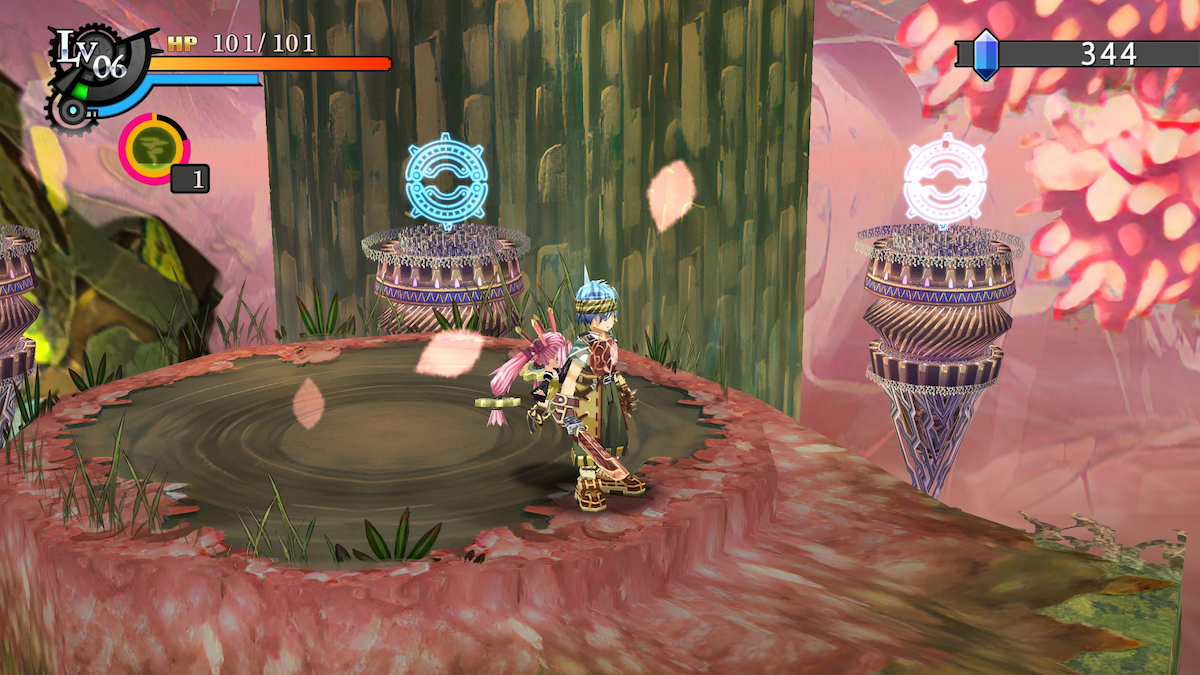
Unfortunate portable origins
Sadly, The Legend of Nayuta does have one noticeable Achilles’ Heel: it was originally a PSP game. Falcom had a rather robust run of titles on the PSP, and The Legend of Nayuta was their final game on the handheld. I get the sense that they treated this game as something of a culminating work, so they crammed it with as many ideas as possible. Unfortunately, this approach hasn’t let The Legend of Nayuta age quite as well.
The big, ever-present issue here is the camera. Presumably to fit the original smaller screen, The Legend of Nayuta tends to zoom in pretty close on its protagonist. This works great in combat, not so much for all that platforming. At forks in the road, it was often hard to tell which way continued the critical path or led to secrets since I couldn’t see that far ahead of me. Other times, I’d scour levels for a secret I missed, only to find it was somewhere just out of my viewing area. This isn’t a huge issue, but it does begin to grate after a while.
Additionally, while I do appreciate how ambitious Nayuta’s kit becomes, some of the ideas here start to feel janky. One sticking point was the ability that let Nayuta hookshot to rotating gears in the sky. This just never felt that good to me, and sometimes led to tumbles down cliffs because I accidentally used a hookshot when I didn’t mean to. Additionally, since many of these abilities are tied to a meter, I ran into moments where I’d need to wait around and let it refill just to advance certain parts.
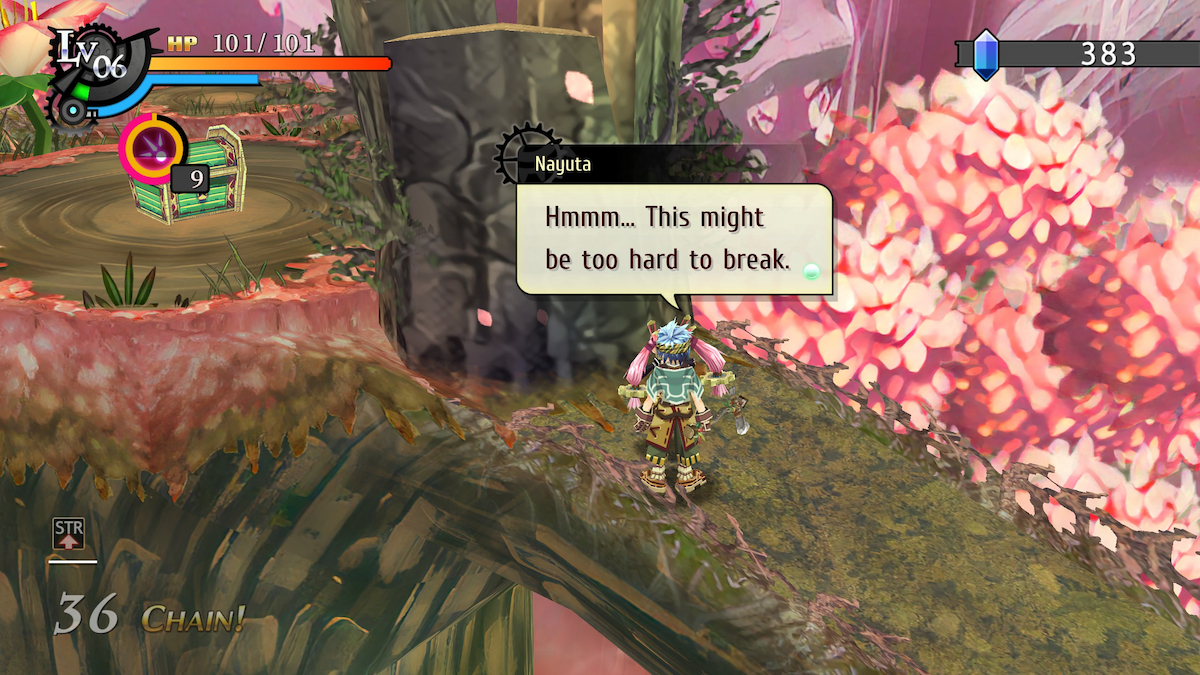
Forward and back, and then forward and back
I also do feel the need to mention that The Legend of Nayuta is, by design, pretty repetitive. One of its major gimmicks is that you’ll unlock various seasons across its other world as you progress. Changing the season transforms levels, which gives you incentive to replay them with a slew of new enemies and challenges to overcome. These do switch things up considerably, but they still involve repeating stages to clear the game. It’s a clever way of doing it, but it’s worth noting all the same.
Additionally, the game will deliberately funnel you back into stages you’ve already cleared as well. Some sidequests, for instance, will have you track down certain objects in a cleared stage. You might find these items on your first run, but only with the proper quest can you pick them up. In other cases, you’ll come across a challenge on a stage that requires its own dedicated run to clear. For instance, challenges like “clear with only defeating three enemies” are functionally impossible on your first attempt, simply because you’ll need to defeat things to access other secrets.
This type of repetition may not be a big deal to fans of say, Ys Origin, which required playing the game three times to earn its true ending. However, The Legend of Nayuta doesn’t space out these returns to older levels or give you new characters to play like Ys Origin did.
I actually don’t say this so much as a negative as much as a general heads up. This type of design clearly fit the game’s handheld origins, so I recommend playing The Legend of Nayuta that way. With quick pick-up-and-play sections, you’ll hardly notice this as a fault. If you marathon the game for hours, it becomes more noticeable. I felt this was a perfect fit for my Steam Deck, where it looked and ran great. So if you’re in the market for a good portable game, definitely give this one a look.
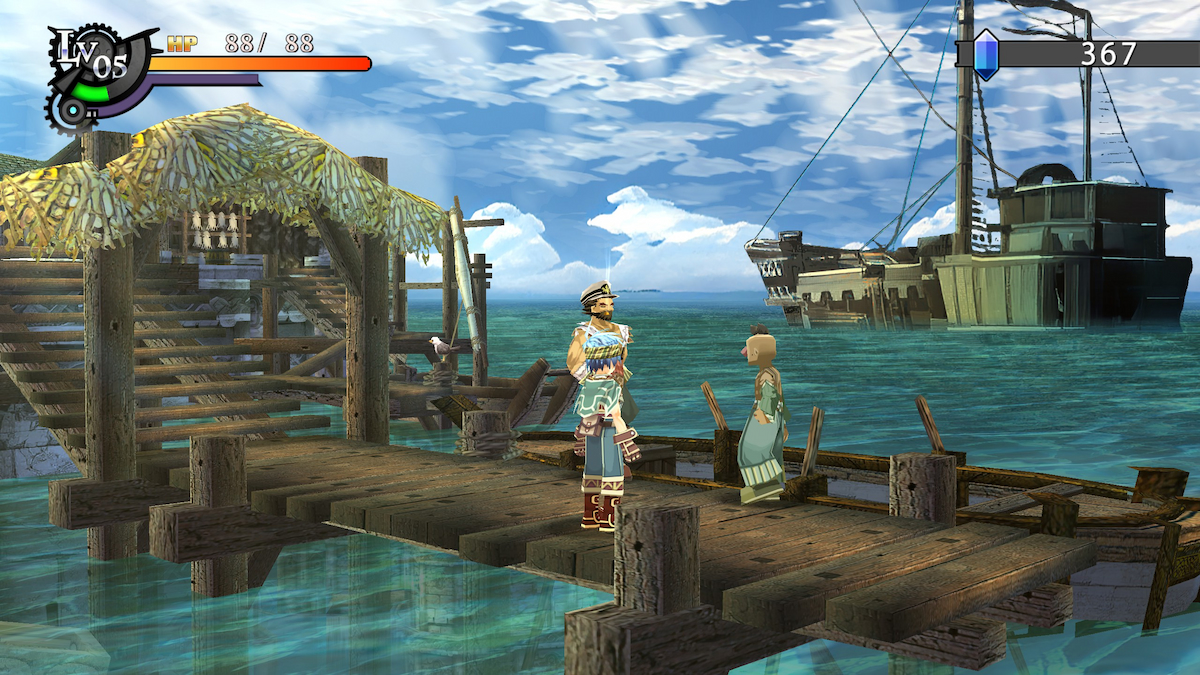
That beautiful B-tier
Again, I need to clarify that I really liked The Legend of Nayuta. Even with the minor frustrations here and there, I generally enjoyed this one from start to finish. After all, it’s hard to feel vexed by repeating levels when the action-platforming-RPG core of the game is this rock solid. The Legend of Nayuta leans into those retro sensibilities that often tests your gaming prowess, with enough RPG elements to create a more casual experience if that’s what you want.
For most, I imagine The Legend of Nayuta might look like one of those “I’ll get it on sale” types of games. Especially since it’s technically a decade-old game with a fresh coat of paint. However, the quality of the experience on offer here is completely worth that full price. Beating The Legend of Nayuta took me about 20 hours, and beating The Legend of Nayuta took me about 25. I won’t elaborate on what that means. Additionally, there’s some robust New Game Plus content here, making this the perfect game to return to over a month or so. Honestly, even if you don’t play it like that, I think The Legend of Nayuta is solid. I think it just hits hardest if you treat it that way.
The Legend of Nayuta: Boundless Trails is pure gaming comfort food. Its mix of action, platforming, and RPG is too pleasant to resist, especially accompanied by its fantastic soundtrack. It certainly shows its age, and especially its portable origins. But that aside, Nayuta’s tale captures an authentic spirit of classic RPGs that I found as charming as I did entertaining. I’m sure fans of Falcom’s work have this one pre-ordered already, but even if you aren’t in that fandom, give this one a look.
[This review is based on a retail build of the game provided by the publisher.]

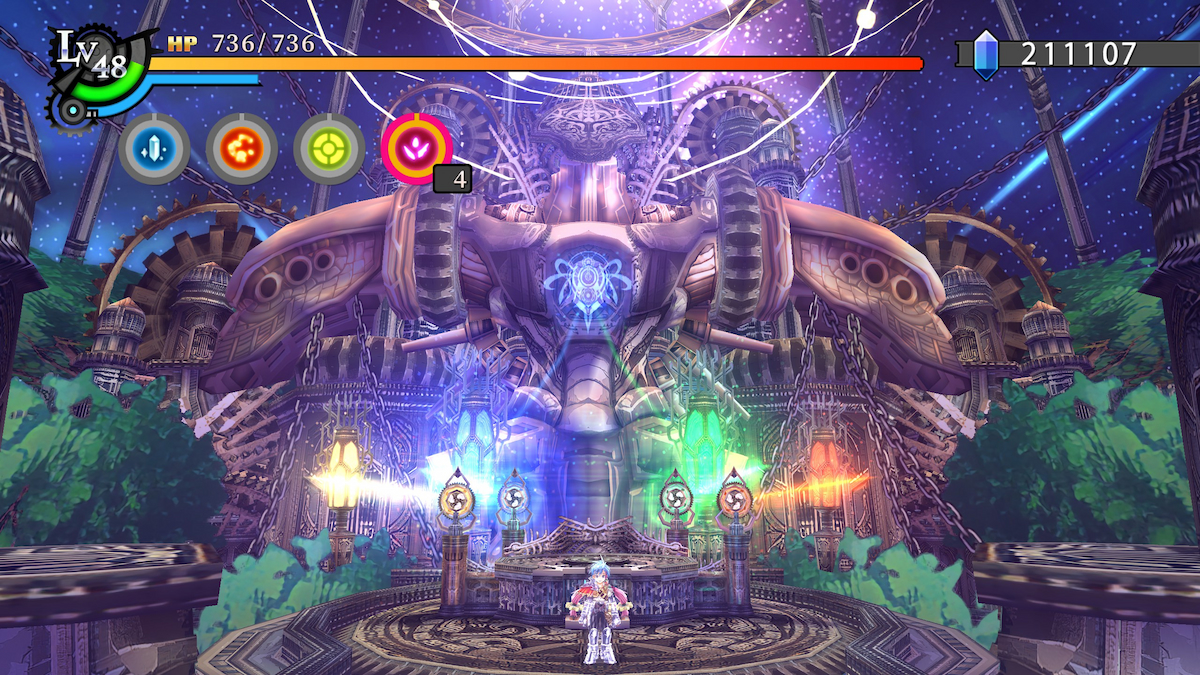











Published: Sep 15, 2023 08:00 am